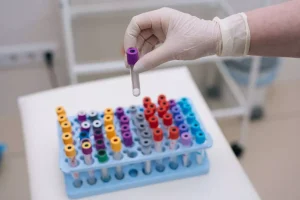
Genetic, psychological, social and environmental factors can impact how drinking alcohol affects your body and behavior. Theories suggest that for certain people drinking has a different and stronger impact that can lead to alcohol use disorder. The development of MR diffusion tensor imaging (DTI) provided a noninvasive approach for in vivo examination of the microstructure of brain tissue, particularly white matter (for a review of the method, see Rosenbloom and Pfefferbaum 2008).
- While nalmefene may be superior to naltrexone in its ability to reduce alcohol cravings,48 and does not carry the same hepatotoxicity risk, its role in treating alcohol-dependent patients remains unclear.
- However, when global and local information are contradictory, alcoholics find it difficult to disengage from one level of processing to the other.
- Study participants try to maintain quiet balance for 30 seconds under different experimental conditions.
- Amongst those who are current abstainers, some have never consumed alcohol for religious, cultural or other reasons, and some have consumed alcohol but not in the past year.
- For example, investigators can use progressive-ratio schedules of reinforcement, in which the number of responses (e.g., lever presses) required for subsequent delivery of the reinforcer (e.g., alcohol) gradually increases throughout a session.
Institutional access
Around one third of people presenting to specialist alcohol services in England are self-referred and approximately one third are referred by non-specialist health or social care professionals (Drummond et al., 2005). The majority of the remainder are referred by other specialist addiction services or criminal justice services. Therefore assessment should not be narrowly focused on alcohol consumption, but should include all areas of physical, psychological and social functioning. Alcohol is excreted in urine, sweat and breath, but the main method of elimination from the body is by metabolism in the liver where it is converted to acetaldehyde and acetate. The rate at which alcohol is metabolised and the extent to which an individual is affected by a given dose of alcohol is highly variable from one individual to another.

Get help with access

The recently established National Alcohol Treatment Monitoring System (NATMS) reported 104,000 people entering 1,464 agencies in 2008–09, of whom 70,000 were new presentations (National Treatment Agency, 2009a). However, it is not possible to identify what proportion of services is being provided by primary care under the enhanced care provision as opposed to specialist alcohol agencies. Alcohol is implicated in relationship breakdown, domestic violence and poor parenting, including child neglect and abuse. It is estimated that over 1 million children are affected by parental alcohol misuse and up to 60% of child protection cases involve alcohol (Prime Minister’s Strategy Unit, 2003). Alcohol also contributes to unsafe sex and unplanned pregnancy, financial problems and homelessness. If compared within the framework of the 1971 Convention on Psychotropic Substances, alcohol would qualify as a dependence-producing substance warranting international control (United Nations, 1977; Ofori-Adjei et al., 2007).
Alcohol Consumption in the U.S.
The endogenous opioid system has important implications for addiction, including modulation of DA release in the NA and of DAergic neurotransmission within the mesolimbic pathway [120]. Polymorphisms of the Oprm1 gene, which encodes the µ-opioid receptor, have been studied in relation to alcohol addiction with mixed results [121,122,123,124,125,126]. Additionally, both the delta and kappa opioid receptors have also been implicated in alcohol addiction [127,128]. Indeed, single nucleotide polymorphisms of Orpk1 and Orpd1 genes may influence behavioural responses to naltrexone [127]. For example, in some brain regions, alcohol affects the expression of genes that encode components of the GABAA receptor. This has been demonstrated by changes in the subunit composition of the receptor in those regions, the most consistent of which are decreases in α1-and increases in α4-subunits (for a summary, see Biggio et al. 2007).
- Topiramate is another FDA-approved drug used in the treatment of seizure disorder that is also effective in preventing migraines and facilitating weight loss (when used in combination with phentermine).
- The dopamine system is also activated by stimulant drugs such as amphetamines and cocaine, and it is through this process that the individual seeks more drugs or alcohol (Everitt et al., 2008; Robinson & Berridge, 2008).
- Alcohol use disorder is a pattern of alcohol use that involves problems controlling your drinking, being preoccupied with alcohol or continuing to use alcohol even when it causes problems.
- Teenagers with higher positive expectancies (for example, that drinking is pleasurable and desirable) are more likely to start drinking at an earlier age and to drink more heavily (Christiansen et al., 1989; Dunn & Goldman, 1998).
Craving was added as a diagnostic criteria and at least two target conditions are now required for diagnosis of AUD.3 New International Statistical Classification of Diseases and Related Health Problems (ICD) 10 codes that correspond to DSM-5 will be used beginning in October 2014. The majority of clinical trials in this review include subjects with DSM-IV alcohol dependence diagnosis. Stressful events, such as bereavement or losing a job, can also trigger heavy drinking in some people, which can then lead to alcohol dependence. If you think you may be dependent on alcohol, you should consult your doctor or another medical professional before stopping drinking. You could speak to a health professional at your GP surgery, or there are also a number of national alcohol support services that you can confidentially self-refer to for advice and support. All of this points to the importance of addressing the needs of family members of people who misuse alcohol.

Local protocols between alcohol treatment services and local safeguarding and family services determine the specific actions to be taken (Department for Children, Schools and Families, National Treatment Agency & Department of Health, 2009). For people who are alcohol dependent, the next stage of treatment may require medically-assisted alcohol withdrawal, if necessary with medication to control the symptoms and complications of withdrawal. For people with severe alcohol dependence and/or significant physical or psychiatric comorbidity, this may require assisted alcohol withdrawal in an inpatient or residential setting, such as a specialist NHS inpatient addiction treatment unit (Specialist Clinical Addiction Network, 2006). For the majority, however, alcohol withdrawal can be managed in the community either as part of shared care with the patient’s GP or in an outpatient or home-based assisted alcohol withdrawal programme, with appropriate professional and family support (Raistrick et al., 2006). Treatment of alcohol withdrawal is, however, only the beginning of rehabilitation and, for many, a necessary precursor to a longer-term treatment process.
The physical signs of alcoholism explained
Changes in the reinforcing value of alcohol during the transition from alcohol use and abuse to dependence reflect (counter)adaptive neural changes resulting from chronic exposure to high alcohol doses. As stated above, during the early stages of nondependent alcohol use, drinking behavior largely is motivated by alcohol’s positive reinforcing effects, whereas in the dependent state it likely is driven by both the positive and negative reinforcing effects of the drug. Multiple processes contribute to the increased motivation to seek drugs during the development of dependence.

Alcohol use disorder
This review describes the neurobiological mechanisms of AUD that are amenable to treatment and drug therapies that target pathophysiological conditions of AUD to reduce drinking. In addition, current literature on pharmacologic (both approved and non-approved) treatment options for AUD offered in the United States and elsewhere are reviewed. The aim is to inform clinicians regarding the options for alcohol abuse treatment, keeping in mind that not all treatments are completely successful in reducing craving or heavy drinking or increasing abstinence. Although psychiatric comorbidity is common in people seeking help for alcohol-use disorders, this will usually resolve within a few weeks of abstinence from alcohol without formal psychiatric intervention (Petrakis et al., 2002). However, a proportion of people with psychiatric comorbidity, usually those in whom the mental disorder preceded alcohol dependence, will require psychosocial or pharmacological interventions specifically for the comorbidity following assisted withdrawal. Therefore, treatment staff need to be trained to identify, monitor and if necessary treat or refer to an appropriate mental health specialist those patients with comorbidity which persists beyond the withdrawal period, and/or are at risk of self-harm or suicide.

Alcohol use disorder is a pattern of alcohol use that involves problems controlling your drinking, being preoccupied with alcohol or continuing to use alcohol even when it causes problems. This disorder also involves having to drink more to get physiological dependence on alcohol the same effect or having withdrawal symptoms when you rapidly decrease or stop drinking. If you are physically dependent on alcohol, you may feel like you are unable to function without it and experience obsessive thoughts about drinking.
